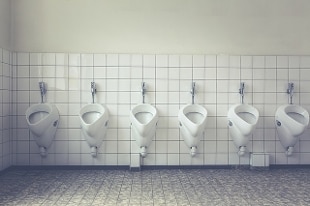Share
June 15, 2020 The risk of infection from Covid-19 can also hide behind the door of a toilet. After recent studies have confirmed the ability of Sars-CoV-2 to survive in the human digestive tract, and therefore the presence of coronavirus in the patients' feces, a new job warns against the danger of flushing: according to scientists, to draw water of the raised lid toilet can spray particles capable of carrying the infectious agent. A 'viral cloud' which therefore, at least in theory, could threaten those who enter the bathroom immediately after a Covid-positive person.In the study - published in the Aip (American Institute of Physics) journal 'Physics of Fluids' - the researchers used precise computer models to simulate the water and air flows that are produced by flushing the toilet. In particular, they used a standard set of fluid dynamic formulas called Navier-Stokes equations to understand what happens with two different types of toilets, single water inlet or double inlet. Furthermore, to evaluate the movement of the droplets that are expelled into the air starting from the 'cup', they used a model similar to that applied also to the analysis of droplets produced by coughing.
The results have been "surprising", scientists warn: the vortex created by pulling the water can push the droplets up to a height of 3 feet (over 90 centimeters), where they could be inhaled or settle on various surfaces. . Not only that: the drops are so small that they remain suspended in the air for more than 1 minute. And the ejection power would be even greater if the toilet has a dual inlet drain, for which scholars calculate that almost 60% of the developed particles can rise upwards.
"An even faster" toilet droplet "movement speed" can be expected when a bathroom is used frequently, such as accessing the family "at peak times" or "in public services in a densely populated area", commented Ji-Xiang Wang of Yangzhou University, co-author of the work.
The solution to the problem could also be simple, that is, always close the lid before pulling the water in order to contain the spread of potentially infected aerosol. However, the researchers note that in many countries, including the United States, the toilet is often missing a lid.
For this reason, the scholars propose to intervene upstream on the design of the toilet, designing cups with the lid that closes automatically before operating the toilet.

